
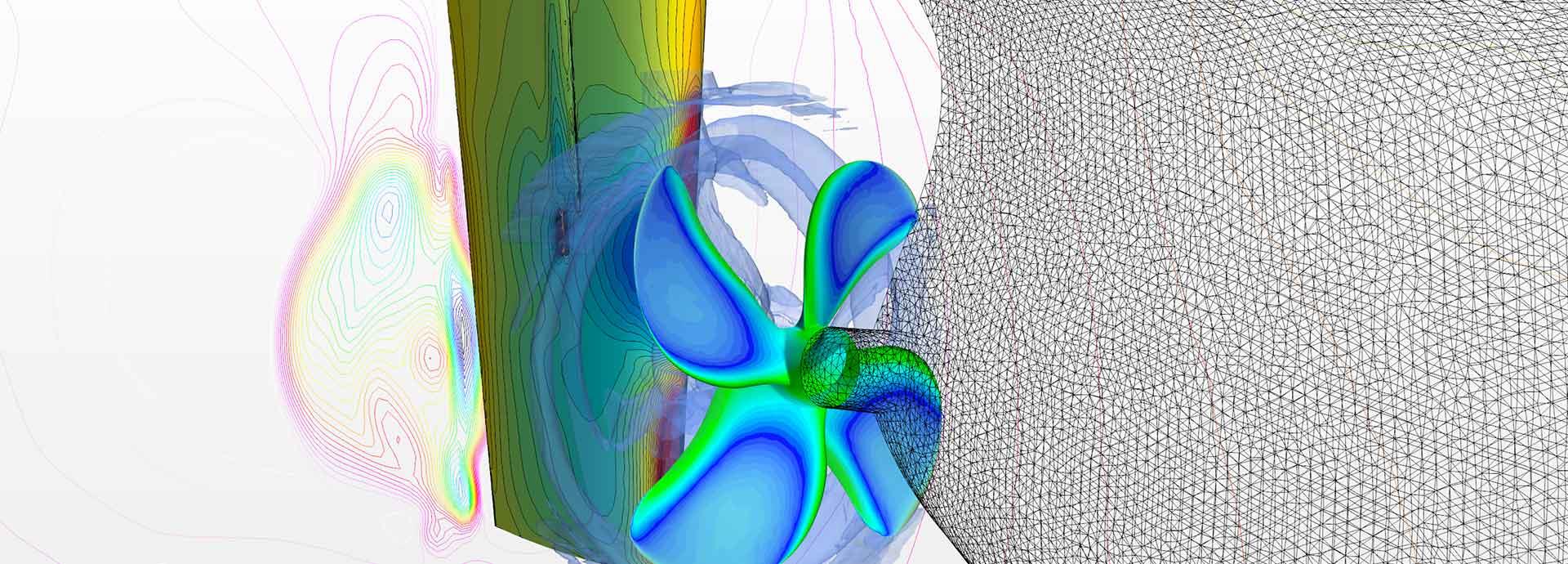
Research and development in propeller design is an ongoing process. And rightly so, Wärtsilä’s propeller design team is busy evolving features that enhance efficiency and reduce fuel consumption. We get you up-to-speed with what’s new and innovative in the market.
It wouldn’t be wrong to say that the maritime industry is currently in its most crucial and exciting phase. New and stringent environmental rules are being introduced to draw attention to the environment and make the industry mindful of its role in keeping it clean. These rules are posing opportunities and challenges alike. The need for energy efficient and innovative solutions that diminish environmental impact is thus stronger than ever before.
Take for example the IMO 2020 that mandates the use of marine fuels with sulphur content of no more than 0.5% or the caps on NOx emissions. Both the scenarios lead to a rise in the use of low-emission fuel that is expensive. It adds to the overall running cost of a ship, and vessel operators are on the lookout for a sustainable solution. Marine propellers with unique features thus play a key role here. Since they form the backbone of a ship ensuring the safety of goods, passengers and the crew, there is crucial bonus on propeller design.
Anish Wankhede, COO & Tech Editor of marineinsight.com argues that the marine propeller market covers not only the merchant shipping sector but also targets naval ships, yachts and other recreational boats which gives it a wider scope.
Not surprisingly then, reports peg the overall marine propeller market projection to reach USD 5.37 billion by 2022 from USD 4.73 billion in 2017.
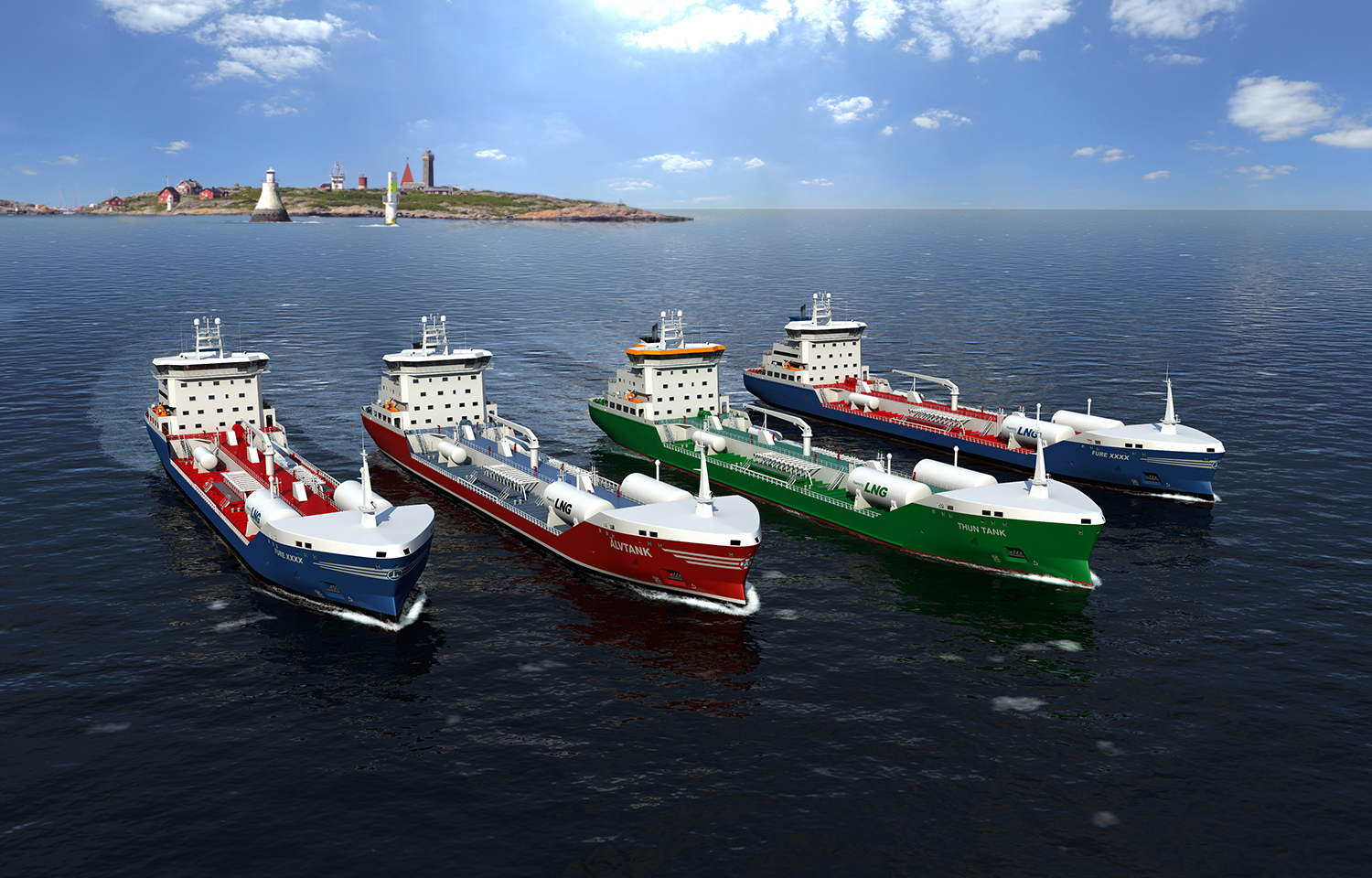
Modern tankers with optimized propulsion system and LNG driven DF engines
It’s all about design
Supporting such dynamic growth is the hybrid propeller design process. While there are several factors that affect the design of a propeller, to understand the nuances, it is crucial to understand hydrodynamics i.e. the concept of using available engine power to create thrust in the propeller as efficiently as possible.
Highlighting the importance of efficiency in design which leads to reduction in fuel consumption and emissions, Norbert Bulten, General Manager, Hydrodynamics at Wärtsilä, Netherlands says that customers expect cavitation behaviour of the propeller completely under control as well, which is often a contradicting requirement.
“A good propeller design is based on how much cavitation is allowed without any loss of efficiency due to implosions of bubbles in the water,” says Anton Voermans, Manager Hydrodynamic Design at Wärtsilä Netherlands, who calls it an ‘art of the designer’.
Knowledge of the behaviour of the water is an essential part of the skill of a good propeller designer, therefore, often called Hydrodynamicist.
To put things in perspective, Voermans talks about Turbinia - the first steam turbine-powered experimental vessel built in 1894 by Charles Parsons. “Turbinia’s first sea-trials clocked a disappointing speed of only 19.5 knots despite trying different propeller designs on the single screw vessel,” he says adding that after intensive research Parson realised that the speed problem arose from the formation of vapour bubbles around the propeller blades. This observation was later to be called cavitation. Even today it plays a significant role in designing propellers.
Thus, the key element in propeller design is finding the right balance between its efficiency, the propeller’s cavitation behaviour, and the resulting vibration levels.
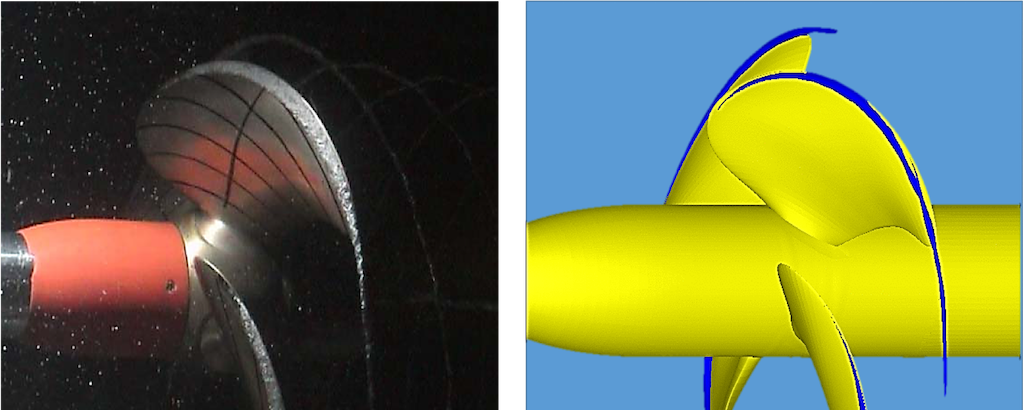
Modern tankers with optimized propulsion system and LNG driven DF engines
So what exactly is cavitation? Cavitation is what every propeller has by default and it is the formation of a vapour cavity in water induced by low pressure. The propeller operates in the wake of the vessel, where consequently varying propeller inflow speed results in low pressure changes. The Hydrodynamicist needs to guide the subsequently formed cavitation so that it is non-erosive and remains within limits since it can be a dominant source for noise on board the ship or radiated underwater.
However, over the years, significant steps have been taken to improve the accuracy and resolution of propeller cavitation and efficiency prediction tools, allowing for better fine-tuning of the delicate balance between cavitation and efficiency. Due to continued efforts, Wärtsilä has been at the forefront of technology using the most sophisticated tools and participating in many joint-industry research projects. With the former LIPS propeller company, heritage of the Netherlands & Wichmann Norway. Wärtsilä has close to 100 years of cumulative experience in developing, designing, and maintaining ship propulsion systems - enough to understand the nuances in propeller design and translate these into tailored, optimised propulsion trains which meet and exceed the expectations of today’s discerning consumer.
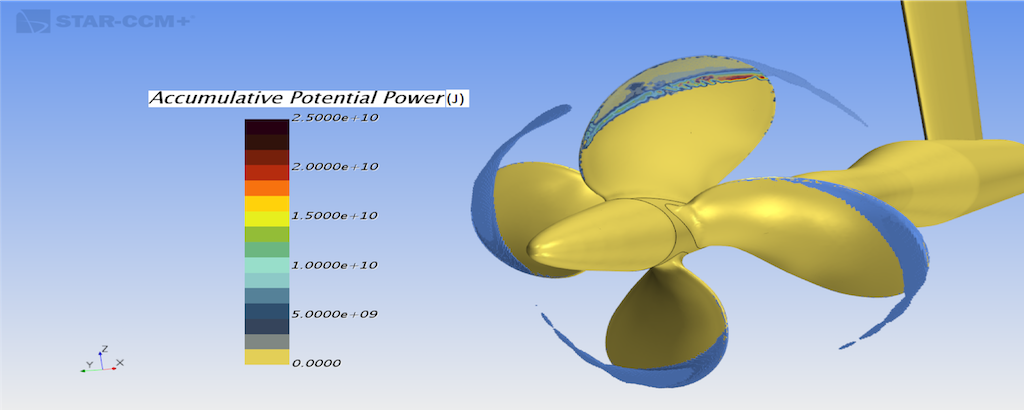
Cavitation erosion risk assessment based on CFD calculation.
Decoding computational fluid dynamics (CFD)
For far too long, the marine industry has relied heavily on model scale testing and experiments for the evaluation of the performance of all kinds of designs but the time has come to replace that with full-scale numerical flow simulations by Computational Fluid Dynamics (CFD),” says Bulten.
CFD seems to be fast emerging as an ideal measure for analyses of self-propulsion calculations for ships. From detailed geometry of the propeller to the free surface-wave making effects and the effects of dynamic sinkage and trim, there are a lot of enhanced capabilities in numerical flow simulations that help experimental self-propulsion tests to be reproduced with sufficient accuracy.
Bulten who has been working on numerical flow simulations for the last two decades knows the ebb and flow of the process. He believes there is enough data and experience to make challenging predictions towards the future.
“At Wärtsilä, we have been working on the building blocks and now we’re graduating to computer simulations on a full-scale. That’s the future and we are ready for it,” he confirms stating that next on course is being able to simulate the entire ship even before it’s built.
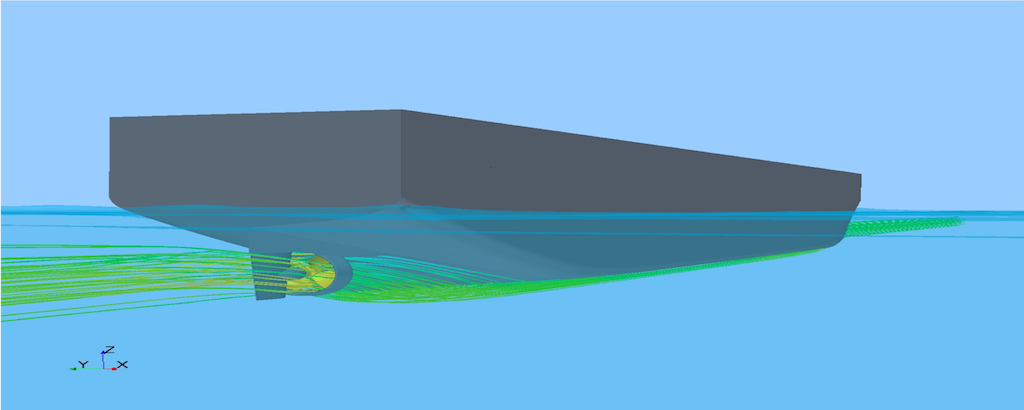
Vessel performance determination based on Virtual Towing Tank.
Mission possible
At the heart of it all is one mission – best design for the customer. And it stems from the basic urge to customise solutions as per the needs of each and every customer, as Voermans puts it. “We do not have a one-fit-for-all policy.”
Admitting that access to computers have been a game changer with availability of faster and more powerful software giving CFD an edge, he is also quick to remind the importance of connecting results of these simulations to the reality for optimum output.
“Simulations cannot replace a propeller designer quite simply because it cannot make a phone call to the customer,” says Voermans on a lighter note.
In the same vein, Voermans talks about Eniram - an energy management and analytics solutions software company that Wärtsilä acquired in order to grow in data analytics, modelling and performance optimisation. It is an acquisition through which Wärtsilä has taken a significant lead in marine digitalisation.
All of this points towards one fact, the journey towards best design for the customer has already begun.
-(002).jpg?sfvrsn=6abebd44_0)
Even with increasing digitalisation, the human touch will remain necessary.


